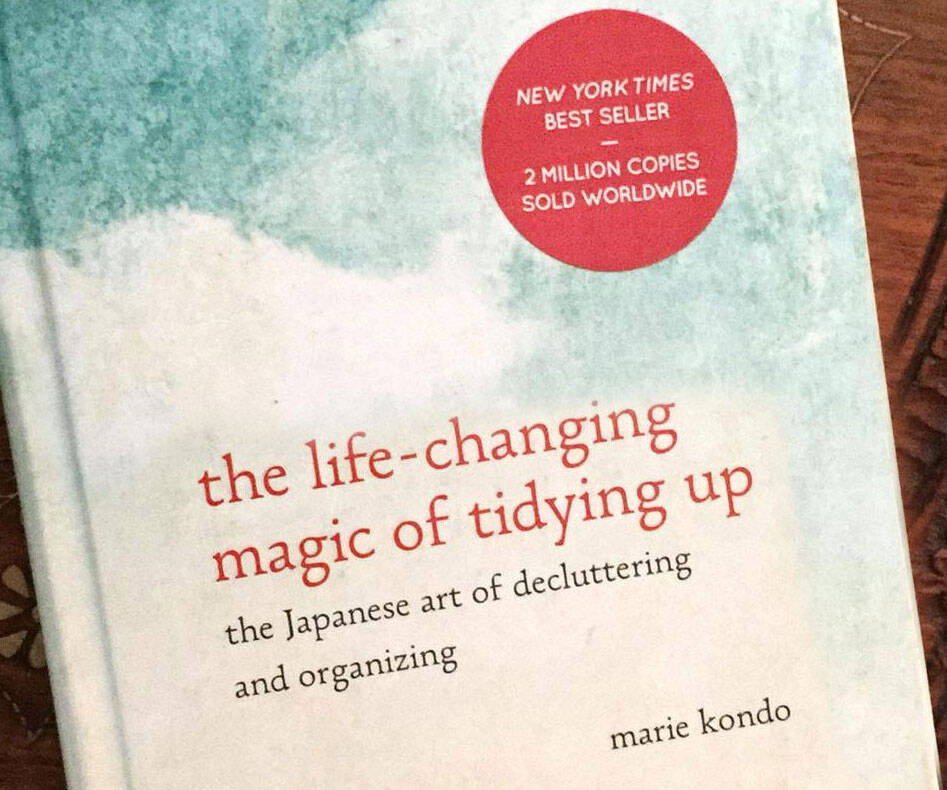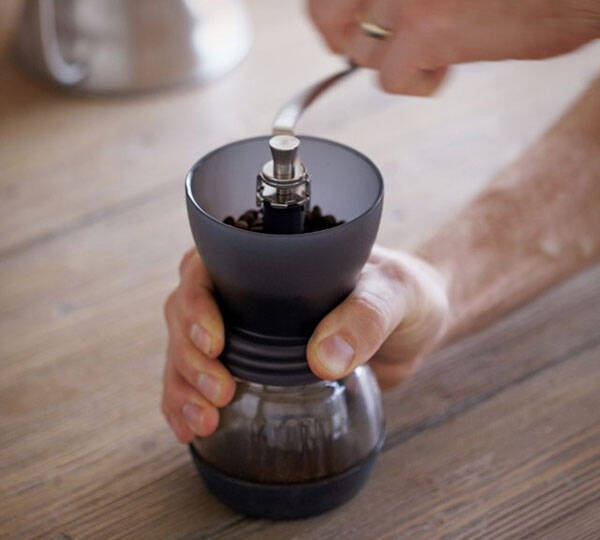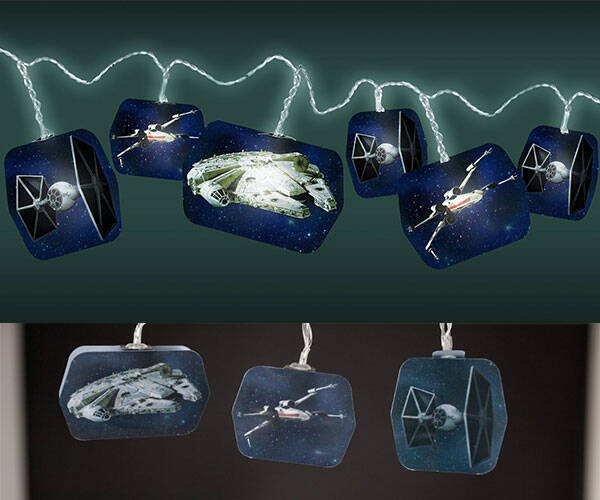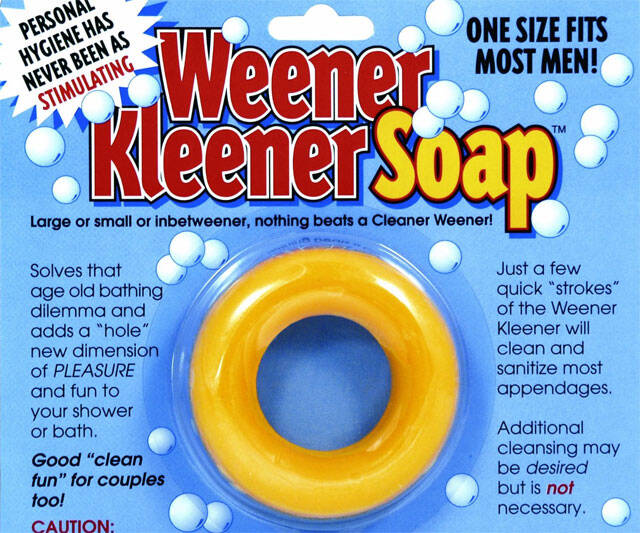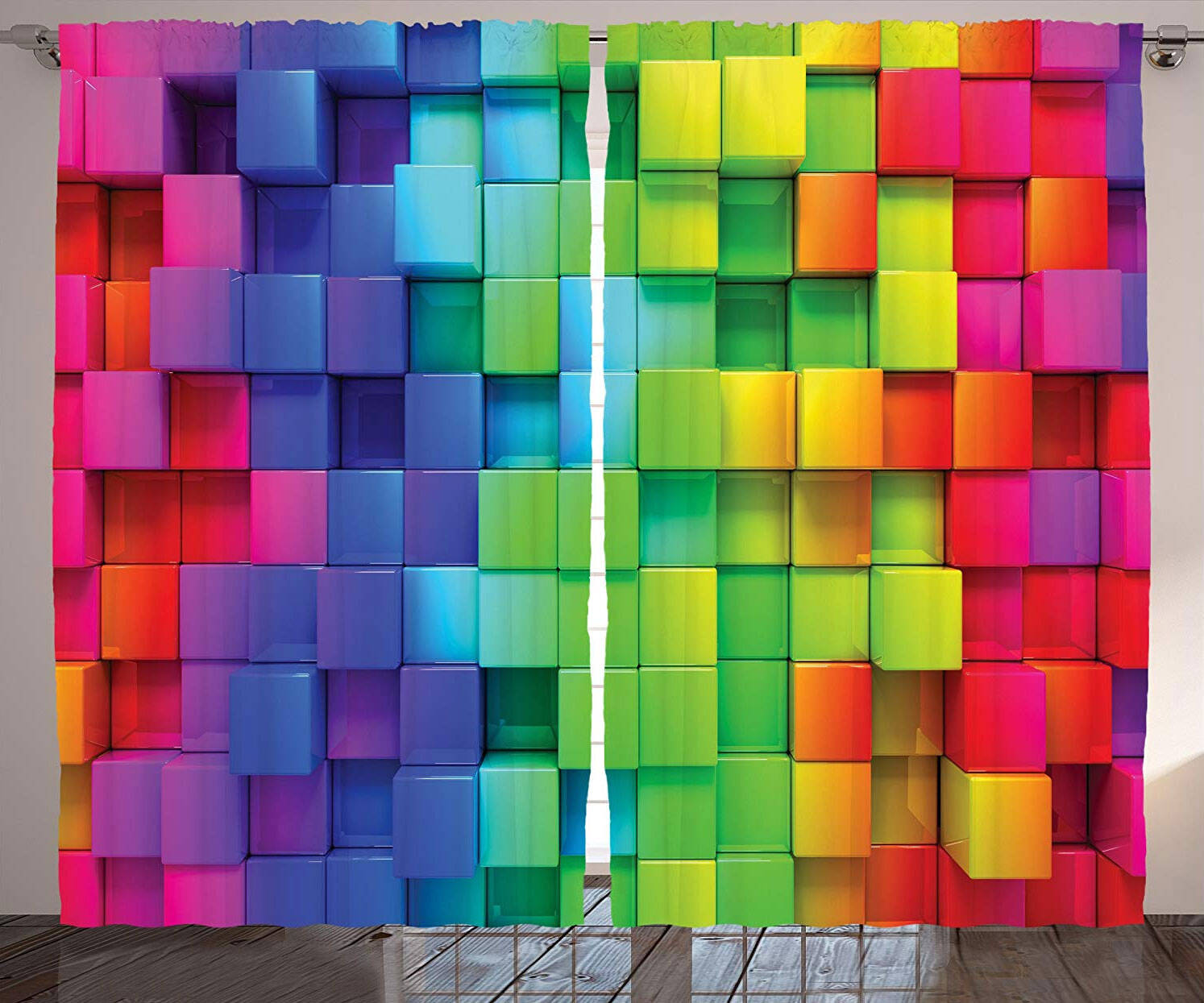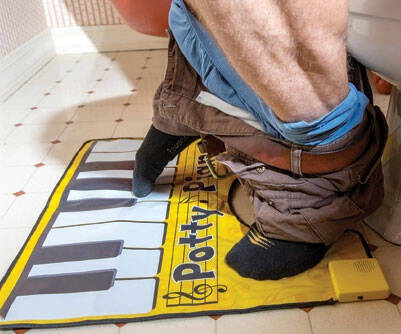The Life Changing Magic Of Tidying Up | |||||||||||
| |||||||||||
Product Description
The #1 New York Times bestselling guide to decluttering your home and the inspiration for the hit Netflix show Tidying Up with Marie Kondo.ONE OF CNN’S MOST INFLUENTIAL BOOKS OF THE DECADE
Despite constant efforts to declutter your home, do papers still accumulate like snowdrifts and clothes pile up like a tangled mess of noodles?
Japanese cleaning consultant Marie Kondo takes tidying to a whole new level, promising that if you properly simplify and organize your home once, you’ll never have to do it again. Most methods advocate a room-by-room or little-by-little approach, which doom you to pick away at your piles of stuff forever. The KonMari Method, with its revolutionary category-by-category system, leads to lasting results. In fact, none of Kondo’s clients have lapsed (and she still has a three-month waiting list).
With detailed guidance for determining which items in your house “spark joy” (and which don’t), this international bestseller featuring Tokyo’s newest lifestyle phenomenon will help you clear your clutter and enjoy the unique magic of a tidy home—and the calm, motivated mindset it can inspire.
Features
- This #1 New York Times best-selling guide to decluttering your home from Japanese cleaning consultant Marie Kondo takes readers step-by-step through her revolutionary KonMari Method for simplifying, organizing, and storing.
- Despite constant efforts to declutter your home, do papers still accumulate like snowdrifts and clothes pile up like a tangled mess of noodles?
Top Reviews
I'm Sitting Down At My Computer and Starting to Write...by D. Fisher, Retired Engineer (1 out of 5 stars)
November 23, 2018
If this the criteria to be a NYT bestseller then I should make bank! I'm am engineer and found this book to be useless. I mean, seriously? Throw out everything that doesn't bring me joy? That's the answer? Well, no joke. We all know that we have too much stuff and should part with it all. I thought that if I had to read one more time how the author was positively an organizational genius at age 15, I would throw that book...which didn't bring me joy...into the trash. As for making my socks and purse happy, my socks are all cozily snugged up together by color...I am an engineer, after all...and my purse feels it is its honored duty to protect its precious traveling companions...the wallet, the inhalor, etc... 24/7.
I, unfortunately, learned some great lessons about parting with too much stuff 8 months ago when my hoarder mother passed away. I bought 120 large trash bags and with a determined ruthlessness, I tossed out 3 tons of trash. Boxed up new stuff for donation. Held estate sales for things of value...which Ms. Kondo does not seem to address very well. I thought that I would gain some insight from this book about purging my own messy house. I don't want to do to my kids what mother did to me. However, this book was no help. As someone else suggested, don't waste your time reading the entire book. Just read the sentences in boldface print. Honestly, that's all that should have been printed but there wouldn't be much money in selling a brochure.
Way better than you'd expect given some of the nasty commentary.
by Eats Paste (4 out of 5 stars)
March 25, 2016
I bought this because the simple-living bug has been biting me lately. I'm not cluttery but I do have a lot of stuff, you know? It's not just laying out in heaps; it all has a 'place', but I've realized I just want less of it.
This book seemed to be very well-liked, and to offer a different approach than the standard home organization book.
Boy howdy.
I'll be honest and say I'm NOT following her system exactly, because some of it is physically not possible for me. But even not doing EXACTLY what she said, I can tell you it's a better approach than all these other organization/decluttering books.
You know, most of the gurus just have ideas on how to store your stuff. It never occurs to them to ask, instead of just telling you about cool boxes and bins to buy, well...do you really NEED all that stuff in the first place? Or, if they DO recommend getting rid of stuff, it's along the old if-you-haven't-used-it-in-X-time-lose-it line. But what happens is you still have a bunch of stuff you don't REALLY LIKE. Yeah, I wear this skirt four times a year, so according to the rule of have-you-used-it-in-the-last-year, I should keep it. But what if I only wear it four times a year because it isn't very flattering? Or it's scratchy? Wouldn't I be better off getting rid of it in favor of some other skirt I'll wear every two weeks because it IS a flattering cut?
I notice lots of folks putting this book down because that's 'no big revelation'. 'Uh, you need someone to tell you to only keep stuff that you like having around and keep it put away?'
Yeah, lots of people DO need someone to remind them that's okay. Don't even TRY to act like there's NOTHING in your house that you only have because someone gave it to you and you feel like they're expecting to see it or you'd feel guilty getting rid of it, or it was your great-great-grandmother's and it's an HEIRLOOM,or you spent good money on this and dang if you're gonna get rid of it till you've got your 'money's worth' out of it, etc etc. That is FAR more common than 'I only have things in my house that I WANT to see/use'.
And I'll tell you too, the whole thing about you needing to physically touch everything to make that decision is true. I have NOT followed her recommendation of pulling every single thing in a given category together to go through it, although I can see the sense of that. You have to know what ya got and how many before you can make educated decisions about how much storage space you need. So you get every piece of clothing you have, every book in the house, etc. I haven't been able to do that. My garage is FULL OF BOXES. Going through every one to find any clothes that might be lurking in there, then going through them again to root out any books lurking in there, and so on for every category? Not gonna happen, sorry.
I'll do the books in the garage when I get to the garage. But in, say, the library, the advice to actually pick up each book and hold it DID help. The first time I just looked at each shelf. Yeah, I still want that. Still want that. Eh, I don't need that one. Oo, I still want all these. But later on, when I did it AGAIN and actually picked up every book, I ended up with THREE BOOKCASES' worth that I was totally OK parting with. Not three shelves. Three bookcases. I mean, I discovered I had four copies of the same book. (I rebuy books because I lose track; I have several thousand). I did NOT NOTICE when I was just eyeballing them that there were four of the same. It's like your mind just stops seeing things it's used to seeing, a common phenomenon. Do what she suggests and physically lay hold of your stuff!
That brings me to the other thing people are really dumping on her about...her suggestion that you talk to your stuff while you're holding it and thank it for its service.
Some of you, first of all, are extremely small-minded. 'Talking to inanimate stuff is bats#$%'...? It depends on what culture you're coming from. Here, yes, for the most part that is odd behavior. (Don't pretend that you've never yelled at your car or your printer or your phone, on the other hand. Do you actually think it understands you or will respond differently if you speak harshly to it? No? Then why do you bother?)
Unfortunately for your crack theory, the author of this book is NOT from a Western culture. It's pretty obvious she's Shinto, or was at one time, and for them, objects are NOT inanimate. They DO have a 'spirit' of a certain kind. That doesn't make her cray-cray, it just means she's not American. Jeez. I mean, Native Americans thought that rocks and rivers and clouds and such things had a life, a spirit, as well. And we all think of them as being a wise, knowledgeable people, with a connectedness to the world that we don't have.
If it offends your religion to thank a coat before you send it on, then direct your commentary to your God of choice instead. What she's really getting at is BEING THANKFUL, and if you have a problem with that, there's something wrong with YOU, not her. Pick up the coat. Say out loud or in your head: "God/Allah/Zeus, thank you for blessing me with this coat, and now I'm going to share the blessing...I know You'll get it to someone who will benefit...thanks for everything You do for me'. Fold it up, put it in the donation bag. Easy. Her religion involves thanking the object itself, your religion involves thanking the deity who sent the object your way, everyone's happy. It's not that complicated, for pete's sake.
It's a GOOD thing to be more mindful of what you have. It causes you to a) become more careful about what you bring into your life, and b) to take better care of your stuff. What's wrong with that? Nothin'.
So basically, while I have to say that in most Western households, where we have more square footage than the average Japanese house,some of what she says is physically impractical/impossible, and I certainly haven't followed her system to the letter, it DOES have useful things to say and I have found it to be of benefit even in an abridged, half-#$$ form.
If you are in a place/frame of mind where you're ready to let go of the stuff that our houses are saddled with, cluttering up our minds, check it out.
Change your relationship with stuff and finally kick the clutter habit!
by eb (5 out of 5 stars)
October 27, 2014
I will admit to having a tortured relationship with stuff. I grew up in a cluttered house and married the King of Clutter (he's the type of person who'll open a credit card bill, pay it online, and then just leave the empty envelope, inserts, and bill itself randomly strewn on whatever surface happens to be nearby). I don't like the disorder of clutter, but dealing with it is such a soul-sucking experience that I haven't gotten very far. Many days I semi-wish the whole place would burn down and save me from having to deal with it.
Typically I'll catch an episode of Hoarders, fear that I'm one incapacitating injury away from being the focus of an episode (if I can't clean up all those strewn papers, they'll just pile up to the rafters, after all!), and then go through a stack of junk in a fit of unhappiness. Not the best way to deal with it all.
Marie Kondo's book is the opposite of that. It's a breath of fresh air and positive energy that brings real joy to the process of "tidying up."
I was only about halfway through before I tackled my clothes. She's right to begin there. My clothes are all mine (which also means that they're in nowhere near as terrible a state as other things in my house), so going through them affects only me and involves only my own feelings. Her advice may sound silly at first, but if your belongings inspire feelings of unhappiness, guilt, etc., her anthropomorphism of them can really help you change your viewpoint in a positive direction. I finished up with three bags for Goodwill and one for the garbage man. My drawers and closet, which were never very messy, are now exactly as I want them, and I feel fantastic!
My one quibble with her instructions has to do with folding. I've always disliked rolls of items. Instead, I fold so I can line things up like files. This makes it easy to pull things out without everything falling over. For my five-year-old, I fold his t-shirts so the front image is visible on the fold, then file them in the drawer so he can see exactly which shirt is which. (Here's an example: [...]) This works well for socks as well as t-shirts, pajamas, etc.
Most of her advice and content is really focused on a Japanese audience. There are many things in the book that won't translate as well culturally for a Western/American readership. For example, she suggests that you greet your home much as you would a Shinto shrine. That is likely to carry a different level of meaning for someone in Japan than in the U.S. Other references to spiritual practice and feng-shui are not likely to resonate the same way for an American audience. I even wonder if the preference for rolling clothes is cultural, since I have such a strong reaction against it and instead prefer folding and filing!
The examples in the book also tend toward the childless female. There is a lot of discussion of travel toiletries, but very little about kitchen utensils, toys, or other items found most often in a family home. The home workshop, which is a particular problem in my home, gets no mention at all. Don't Japanese people own countless drills, boxes of screws, and electrical tape?
But the reason for reading this book is not the specific advice about t-shirts and cupboards. It's about changing your relationship with the stuff you own. The tone of her book is so upbeat and positive, it's infectious. It's hard to keep reading it to the end, because you want to jump up and start using her methods immediately. I had little trouble adjusting her suggestions to match my own cultural perspective and physical home.
In the book she mentions that it'll take 6 months to fully tidy your home so that everything left inspires joy. I'm now a week in, and 6 months seems like hardly enough time to tackle all the junk in my house, but I can fully see how this can be a life-changing process.
I followed the book's instructions and threw it out.
by JavaBarista (1 out of 5 stars)
January 4, 2019
According to the author's philosophy, you should only keep things that bring you joy. So I threw this book out.
We get it Marie Kondo, you think you are amazing
by K. Wilcox (1 out of 5 stars)
August 13, 2017
This book is crap. The author feels the need to keep bringing up the fact that she is, apparently, the perfect organizer. She talks about herself entirely too much, and once I got the part about getting rid of all of my books I was like, "NOPE!" I understand her concept that you should throw away anything that doesn't make you feel happy when you touch it, but some of her ideas are ridiculous. Get rid of most of your seasonal clothes and only keep things that can be worn year-round? I live in Maine. It gets cold in the winter and hot in the summer, so explain to me what I'm supposed to wear. I had heard some pretty good things about the Kondo Method of cleaning and I just wanted to declutter my house a bit so I bought this book, but I feel ripped off. This was not the one for me.
Life-changing book - best $10 I've ever spent EVER
by Laura I. (5 out of 5 stars)
January 30, 2017
I'm somewhat of a self-help book addict. I was browsing Pinterest one day and stumbled upon the "konmari method" and was intrigued, so I bought this book for kindle and read it in about an hour. I always thought I was a very organized person (because everything I owned had a designated, labelled place and my house was always super clean), but after reading this book I realized I was nothing more than a skilled hoarder. I locked myself in my house for 6 straight weeks (seriously, only came out for absolute necessary obligations and appointments) and decluttered the ever-living hell out of my house. The only thing that slowed me down was waiting for every Tuesday to roll around when the big donation truck would come and haul off all my unwanted items, or waiting for every Monday for the trash collection. I probably discarded well over 100 bags of clutter in that 6 weeks and earned over $400 selling the big-ticket items via social media, which I used to make my house prettier. I also donated an entire trunk full of books, CDs, and DVDs to my local library. My home's available storage used to be completely maxed out, and now I have empty drawers everywhere! I also have no less than 40 completely empty plastic storage bins in my garage that were previously full of clutter (and the storage bins are the next thing that will be sold!). Reading this book was life-changing. While I didn't follow it to the T (I do not thank my socks for their service every day LOL), it is the best feeling in the world to look around a room and realize you love every single item in said room. I no longer feel weighed down by "stuff". I still have a few odds and ends to finish up in my house, but I'm about 90% done at this point and loving it. I never knew getting rid of things could be so addicting. I also never thought I was the kind of person who could ever throw away a photo, but by the time I got to the sentimental items category, I discarded an entire garbage can full of photos without hesitation and it felt great!
A good book that perhaps is too comprehensive in some areas and neglects others
by Marc P. (3 out of 5 stars)
February 28, 2018
First, this book has done for me what I wanted it to do: it's helping me get rid of junk, albeit not quite in the way the author wants me to do it, but progress is progress, right?
I will say the book is somewhat repetitive and it makes the same point over and over (you have too much clutter and you're keeping it for the wrong reasons); this might be a cold, hard, necessary teaching method to break the habit of keeping clutter, so I won't dwell on that. On the other hand though, in areas where I wanted more detail, such as the steps she provides to actually do "decluttering", or "tidying" as the author calls it, I found I wanted more detail. While clothing (for example) is well covered, entire categories of typical American "stuff" are left out, such as cupboards, kitchen tools, towels/linens, sporting goods, major electronic and computer gear, and the garage (and the myriad of categories of stuff found in there). There is absolutely no mention of a garage. The book, to me, is aimed heavily towards a female audience, and I'm not saying that in a sexist way. There is nothing wrong with that, it's just a missed opportunity to be more inclusive; men have stuff too, and the vast majority (not scientifically measured, just my impression) of the examples in the book are aimed at the types of belongings women *typically* own, again please don't take this the wrong way. Most of the client examples the author mentions are women, with perhaps only two male clients I can remember. This is only notable to the extent that many pages are spent discussing organizing purses and none spent on organizing screwdrivers. I own zero purses but lots and lots of screwdrivers (along with other tools), and they badly need organizing. But I think I'll be able to apply the technique to my garage as well as my closet. So for any of you out there who also own screwdrivers and they are in need of organization, perhaps you'll be in the same boat as me, wondering why your tool collection was never even mentioned.
I would like the author to focus more on suggesting *donating* the items she so desperately wants us to discard. She gives good reasons for not giving your old stuff to your family, but surely there's a better home for unwanted clothing than the trash. I've made it a point to donate mine. Perhaps this type of thinking will make it into the second edition.
Finally, as the author is from Japan, some of the cited mystical benefits of "tidying up" may register as goofy to Americans. Thanking your belongings for a job well done, as she suggests, is a form of consideration which may not resonate. But this is a matter of personal preference and posture; it certainly can't hurt but I feel all but the most committed American readers may find it a bit campy.
In any case, I did get rid of a lot of stuff on my first round, and indeed it felt good to do so. I've got a long way to go, but at least the author has given me a rational framework for examining an item and deciding "should it stay or should it go". More is going than ever before.
Do not waste your money!
by NewYorker (1 out of 5 stars)
September 20, 2018
Here's what the book says: touch every item in your home and if you "love it" then keep it. If you don't get that warm and fuzzy feeling of love, throw it away. There. Now you don't have to read it. Seriously, de-cluttering and organizing can have a huge positive impact on life. But the way this book approaches the topic is so silly and juvenile that I don't understand why it's a best seller. People: use your common sense and toss the things you don't use that are cluttering up your life. Ok?
This book had me packing all my clothes in one big pile and I loved it....
by PetriB (5 out of 5 stars)
May 20, 2017
The life changing magic of tidying up by Marie Kondo has been a very fascinating read. I read this book in one week and applied the principles she teaches that very same weekend (much to the dismay of my poor wife). From reading the reviews on Amazon I think there are a lot of people who have misconceptions about this book and what it's about.
This is not a one fix book that will solve all of your life problems in one foul swoop. What it is, is a book about tidying up. Kondo presents a very specific method of going through all of your things and identifying exactly "what sparks joy" and what does not.
I found the exercise of going through all my things surprisingly profound. Marie does suggest that you should thank your possessions and greet them, which might be a bit much for most western readers. But what was surprising is the process of going through the, seeming insurmountable task. of piling all your things together and going through them one by one.
You start thinking about other areas of your life where this same skill can apply. What else do you have in your life, accept for possessions, that does not spark joy?
At the very least you will walk away from this book with a tidier and cleaner house. At the very best you might start thinking differently about things and life and what really sparks joy in your life.
From looking at the amount of reviews this book has and the average rating, I think many people come away with more than just a tidier house.
If Only I Could Give This Book Zero Stars
by Susannah (1 out of 5 stars)
January 6, 2019
I truly hate everything about this silly book, and yet I gave the author the courtesy of actually reading the whole thing, well beyond the point where she finally totally lost me. She lost me at books, and the idea that books are merely paper and printed words. NO! Books reflect an owner's lifetime of aspiration and curiosity and study and knowledge. They reflect how we see ourselves. The ones read before are cherished as part of one's history, the date(s) when read perhaps noted on the front page. They hold vivid memories of who we were when we first read or acquired them. The last ones I'd ever discard are the ones I've already read, unless of course I found them as inane as Ms. Kondo's book. I get the idea of "sparking joy," and I understand that there are people so overwhelmed by junk that they can't figure out where to begin, but for others of us, happiness and memories are embedded in our possessions, and would be lost in the absence of them. Some of us are collectors. Some have saved for a lifetime as the historians of our lives. The goal of such lives is to surround ourselves with cherished possessions and enjoy them, not to sip herbal tea of an afternoon with nothing to look at but a bouquet of flowers -- the ideal state of being Ms. Kondo holds out. Ms. Kondo says she wants to enable readers to decide what to keep, but in fact her method of piling every book or stitch of clothing in one place is designed to shame people into discarding, and she really doesn't care where it goes. Mountains of waste for landfills are just fine as long as they leave the house. At least to this reader, advocating turning possessions into waste withing making a serious effort to sell or donate the best of them is irresponsible. We all should be free from guilt packing things away so that they may "spark joy" another day, or simply find new utility when our lifestyles change again. I refuse to engage in a war on possessions as though happiness can come only in the absence of them. I can't wait for this fad to pass.
Customers Who Bought This Item Also Bought
- The Minimalist Way: Minimalism Strategies to Declutter Your Life and Make Room for Joy
- Kiki & Jax: The Life-Changing Magic of Friendship
- Summary of The Life-Changing Magic of Tidying Up: The Japanese Art of Decluttering and Organizing by Marie Kondō
- Life-Changing Magic: A Journal - Spark Joy Every Day (The Life Changing Magic of Tidying Up)
- Martha Stewart's Organizing: The Manual for Bringing Order to Your Life, Home & Routines
- Joy at Work: Organizing Your Professional Life
- Spark Joy: An Illustrated Master Class on the Art of Organizing and Tidying Up (The Life Changing Magic of Tidying Up)
- The Life-Changing Manga of Tidying Up: A Magical Story (The Life Changing Magic of Tidying Up)
- Tidy the F*ck Up: The American Art of Organizing Your Sh*t
- Spark Joy: An Illustrated Master Class on the Art of Organizing and Tidying Up (The Life Changing Magic of Tidying Up)
*If this is not the "The Life Changing Magic Of Tidying Up" product you were looking for, you can check the other results by clicking this link

